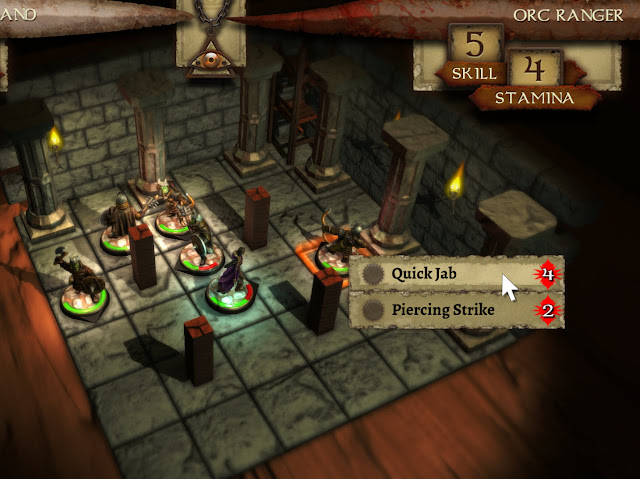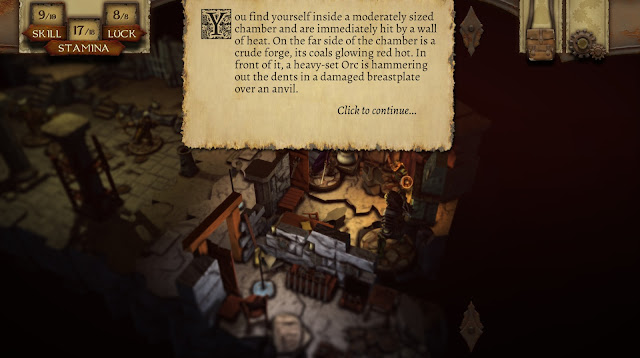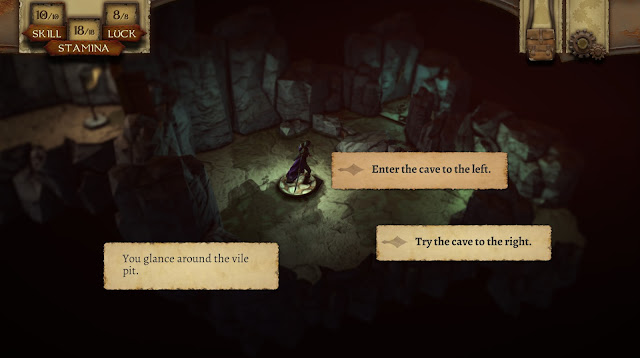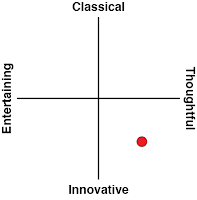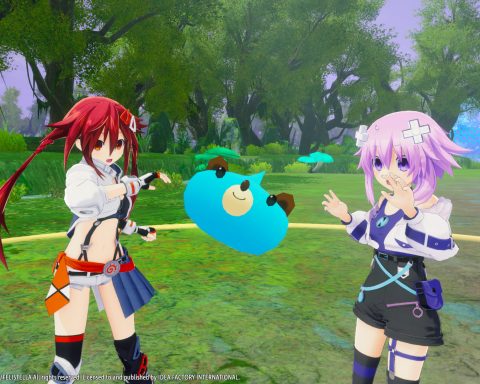Review by Nick H.
The Warlock of Firetop Mountain relies heavily on a sense of nostalgia, which is always a dangerous place to go. If the audience is too young/never experienced the source material in any way, they might not ‘get it’ or be as invested as someone who can slap those rose coloured glasses on and recall ‘the good old days’ so fondly. There is of course the other side of the coin, which is that when you tug at someone’s fondest memories, you risk not living up to expectations that have become inflated over time. It is a careful line to tread, and while The Warlock of Firetop Mountain does not get it right all of the time, the developers have done a pretty good job overall in breathing life into a classic tabletop adventure.
Related reading: Tin Man Games has also done direct ports of a number of Fighting Fantasy games to iOS. Island of the Lizard King is a good example. Matt’s review.
Similar to when Matt reviewed Joe Dever’s Lone Wolf game a while back, I found myself wondering just how well the source material of the original 1982 Fighting Fantasy game book could be modernised to play like a current videogame. I grew up adoring these types of books, along with Choose Your Own Adventure and everything else that essentially allowed me to author my own imaginary experience. This was before I was introduced to group gaming like Dungeons & Dragons, but I still recall these types of games incredibly fondly.
In Tin Man Games’ take on the classic text, you’ll start out by selecting one of handful of heroes that has different stats and a unique quests that sets them on their adventure. Regardless of whom you choose, your characters find themselves delving into Firetop Mountain to face a series of challenges that each is perhaps slightly differently suited to tackle than others. The best way to describe this is that The Warlock of Firetop Mountain is a dungeon crawler that largely plays out in text. That makes sense, given that the source material is in fact a book, and indeed many of the game’s longer, more descriptive passages probably come right from it. So it remains authentic to the source material, despite the fresh coat of paint.
Gameplay carries out through an isometric view of the map where your character and the various monsters move about as new zones are encountered and introduced with text along the way. The black and white illustrations that often accompany the text certainly spark that nostalgic feeling of reading the old books as simple choices are presented to your character along the way. What lever do you want to pull, or which hallway do you want to travel down? You have a trio of respawns that behave like bookmarks and take you back to an earlier checkpoint (which are somewhat spaced apart, leading you to repeat a good amount of what you had already done at times), and once they are spent, you are done; fall a fourth time and you’ll need to start from the top again.
Now, I will admit that as a kid playing these types of books, I often kept my finger or a thumb on the prior page so I could flip back if I didn’t like where my choice was taking me. Call it the ‘save often’ mentality. Often times death came in unpredictable and unfair ways, so I learned to game the system by simply going back to my prior decision and doing it differently. The Warlock of Firetop Mountain is a rather short game that knows you are going to die a lot early on. I found myself taking notes on a pad so that the next time I had a choice that ended poorly, I knew to do something different on the inevitable subsequent play through. By the time I was done with the game, I had a sort of flowchart assembled not unlike the grid paper maps that I used for old school dungeon crawlers that essentially told me what to expect when. There is one segment (more about that in a minute) that provides randomness as well as the occasional item/chest that is not set in stone, but by and large this becomes a predictable experience with enough resilience and good note taking. I can see this form of trial and error and frequent resulting death as something that is going to seem unfair and frustrating to some players, but the target market for the game – those that have fond memories of these types of games – might be more inclined to be forgiving.
Combat can be something of a mixed bag as well. At least here you have full control over your actions and there is more of a sense that as a result, you have control over the outcome. It feels less random than the aforementioned scenario where a poor choice could send you plummeting to your doom with no real indication that it was a poor choice in the prior text. Combat is turn-based in that you make decisions on movement or striking as does your opponent. Once the decision is registered, both sides play out at the same time. It all sounds really random at first, but you start to pick up on visual clues quickly enough that allow you to reliably anticipate what the enemy is going to do. Unfortunately this combat is quite shallow and it becomes highly predictable, making the combat something that eventually becomes more of a chore than an exciting element to look forward to. This is especially true in a specific dungeon that has some randomly generated elements often littered with baddies. Like some of the cheap deaths that might force you to restart to the game, this sequence provides little of substance other than to lengthen the otherwise brief experience.
Aesthetically speaking, The Warlock of Firetop Mountain is both charming yet simple. Tie visuals are not incredibly detailed, and the animations are often simple as it tries to capture the feeling of playing an actual tabletop board game. It was akin to playing Dungeons & Dragons by myself, I suppose due to the pawns, grid maps and dice rolling associated with movement and combat. These elements, like the call backs to the original source material help to elevate this from what could have been a frustrating mess to something that actually captured my imagination and tugged at my memories in just the right way.
More often than not The Warlock of Firetop Mountain works for me, because I am the target audience. I am old enough to have grown up on these types of single player, early RPG experiences and still have incredibly fond memories of them. The Warlock of Firetop Mountain does enough with modern technology to update the experience and make it both fresh and familiar, which is not an easy task. However, by adhering so closely to the source material and old school conventions, The Warlock of Firetop Mountain will inevitably rub some people the wrong way due to uneven difficulty and some unfair demises that seem harsh when compared to something like the Souls titles, which are renowned for their challenges but also for their fairness in teaching you how to play the game better.
– Nick H.
US Editor

